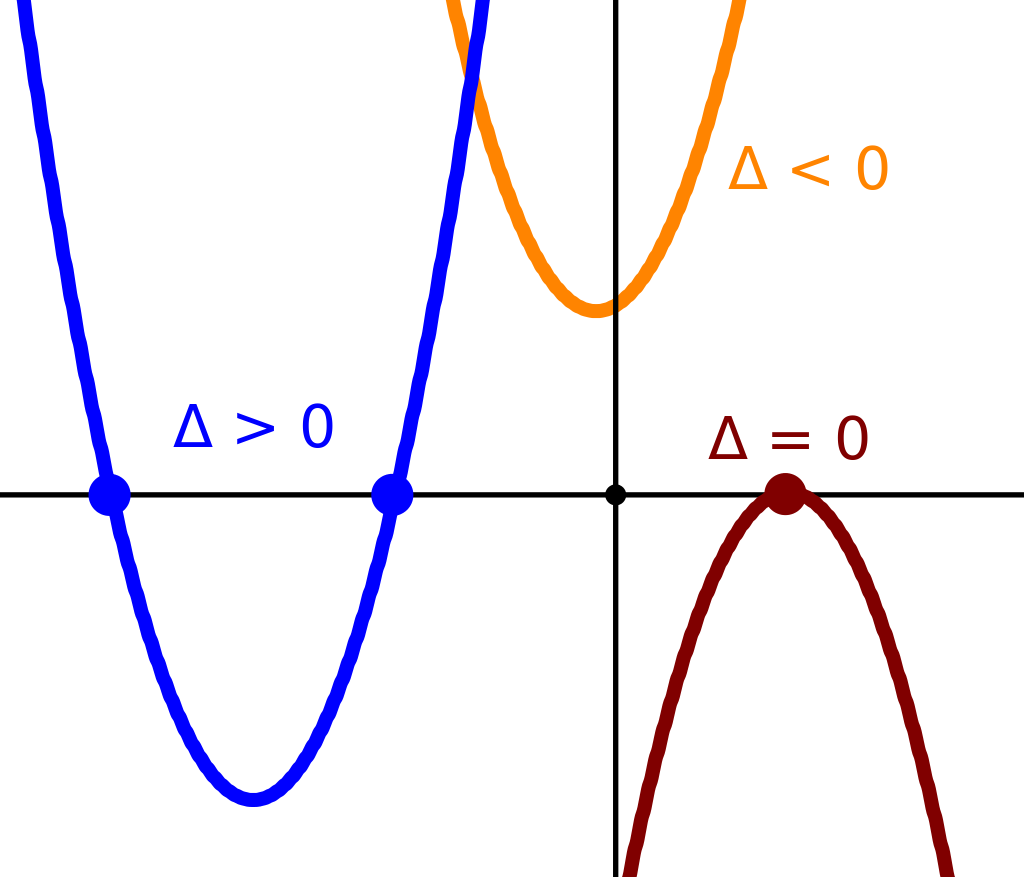
Find the errors
There is already some code, but there are still errors. Correct all the errors and submit to get feedback.
A quadratic equation is any equation that can be rearranged in standard form as
\[ax^2 + bx + c = 0\], where \(a, b, c \in \mathbb{R}\) and \(a \neq 0\).
The expression
\[\Delta = b^2 - 4ac\]is called the discriminant of the quadratic equation. The sign of \(\Delta\) determines the number of real-valued solutions. If \(\Delta > 0\), then there are two distinct real-valued solutions (\(x_1 \neq x_2\)). The real-valued solutions can be determined as:
\[x_{1} = \frac{-b - \sqrt{\Delta}}{2a}\ \ \ \text{en}\ \ \ x_{2} = \frac{-b + \sqrt{\Delta}}{2a}\]Input
The three parameters \(a\), \(b\) and \(c\) of a quadratic equation, each on a separate line.
Output
You may assume that in this exercise it is always a valid quadratic equation with two solutions each time (discriminant is always greater than 0, \(\Delta > 0\)), which must be printed. Always state \(x_1\) first and \(x_2\) on the next line.
Example 1
The zero points of \(1x^2 + 4x -5\) are \(x_1 = -5\) and \(x_2 = 1.0\).
Input:
1
4
-5
Output:
Zero point 1: -5.0
Zero point 2: 1.0
Example 2
The zero points of \(2x^2 + 5x -3\) are \(x_1 = -3\) and \(x_2 = -0.5\).
Input:
2
5
-3
Output:
Zero point 1: -3.0
Zero point 2: 0.5